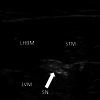Pediatric Regional Anesthesia: A Practical Guideline for Daily Clinical Practice
- PMID: 40526440
- PMCID: PMC12227213
- DOI: 10.1097/ALN.0000000000005554
Pediatric Regional Anesthesia: A Practical Guideline for Daily Clinical Practice
Abstract
The past two decades have seen remarkable progress in pediatric regional anesthesia. Significant efforts have been made to develop central and peripheral techniques that are both practicable and reliable, with increasing success and very low complication rates driving a growing appreciation for this subspecialty. Regional anesthesia can be used to optimize perioperative pain control, to avoid mechanical ventilation, and to take advantage of favorable immunomodulatory and gastrointestinal side effects in children. Implementing a broad spectrum of these techniques will require specialized knowledge of anatomic structures, experience to select appropriate techniques for specific surgical procedures, and considerable hand skills to execute these techniques. This review has been written to summarize state-of-the-art information about all relevant aspects of pediatric regional anesthesia and to provide a practical approach to how regional anesthesia in children can be implemented in daily clinical practice.
Copyright © 2025 The Author(s). Published by Wolters Kluwer Health, Inc. on behalf of the American Society of Anesthesiologists.
Conflict of interest statement
The authors declare no competing interests.
The article processing charge was funded by the Medical University of Vienna.
Figures






Similar articles
-
The Black Book of Psychotropic Dosing and Monitoring.Psychopharmacol Bull. 2024 Jul 8;54(3):8-59. Psychopharmacol Bull. 2024. PMID: 38993656 Free PMC article. Review.
-
Health professionals' experience of teamwork education in acute hospital settings: a systematic review of qualitative literature.JBI Database System Rev Implement Rep. 2016 Apr;14(4):96-137. doi: 10.11124/JBISRIR-2016-1843. JBI Database System Rev Implement Rep. 2016. PMID: 27532314
-
Factors that impact on the use of mechanical ventilation weaning protocols in critically ill adults and children: a qualitative evidence-synthesis.Cochrane Database Syst Rev. 2016 Oct 4;10(10):CD011812. doi: 10.1002/14651858.CD011812.pub2. Cochrane Database Syst Rev. 2016. PMID: 27699783 Free PMC article.
-
The Lived Experience of Autistic Adults in Employment: A Systematic Search and Synthesis.Autism Adulthood. 2024 Dec 2;6(4):495-509. doi: 10.1089/aut.2022.0114. eCollection 2024 Dec. Autism Adulthood. 2024. PMID: 40018061 Review.
-
Patient navigator programmes for children and adolescents with chronic diseases.Cochrane Database Syst Rev. 2024 Oct 9;10(10):CD014688. doi: 10.1002/14651858.CD014688.pub2. Cochrane Database Syst Rev. 2024. PMID: 39382077
References
-
- Blaylock M, Engelhardt T, Bissonnette B: Fundamentals of neuronal apoptosis relevant to pediatric anesthesia. Paediatr Anaesth 2010; 20:383–95. doi:10.1111/j.1460-9592.2010.03291.x - PubMed
-
- Disma N, Hansen TG: Pediatric anesthesia and neurotoxicity: Can findings be translated from animals to humans? Minerva Anestesiol 2016; 82:791–6. - PubMed
-
- Niesters M, Overdyk F, Smith T, Aarts L, Dahan A: Opioid-induced respiratory depression in paediatrics: A review of case reports. Br J Anaesth 2013; 110:175–82. doi:10.1093/bja/aes447 - PubMed
-
- Russell P, von Ungern-Sternberg BS, Schug SA: Perioperative analgesia in pediatric surgery. Curr Opin Anaesthesiol 2013; 26:420–7. doi:10.1097/aco.0b013e3283625cc8 - PubMed
Publication types
MeSH terms
LinkOut - more resources
Full Text Sources
Medical
Miscellaneous

